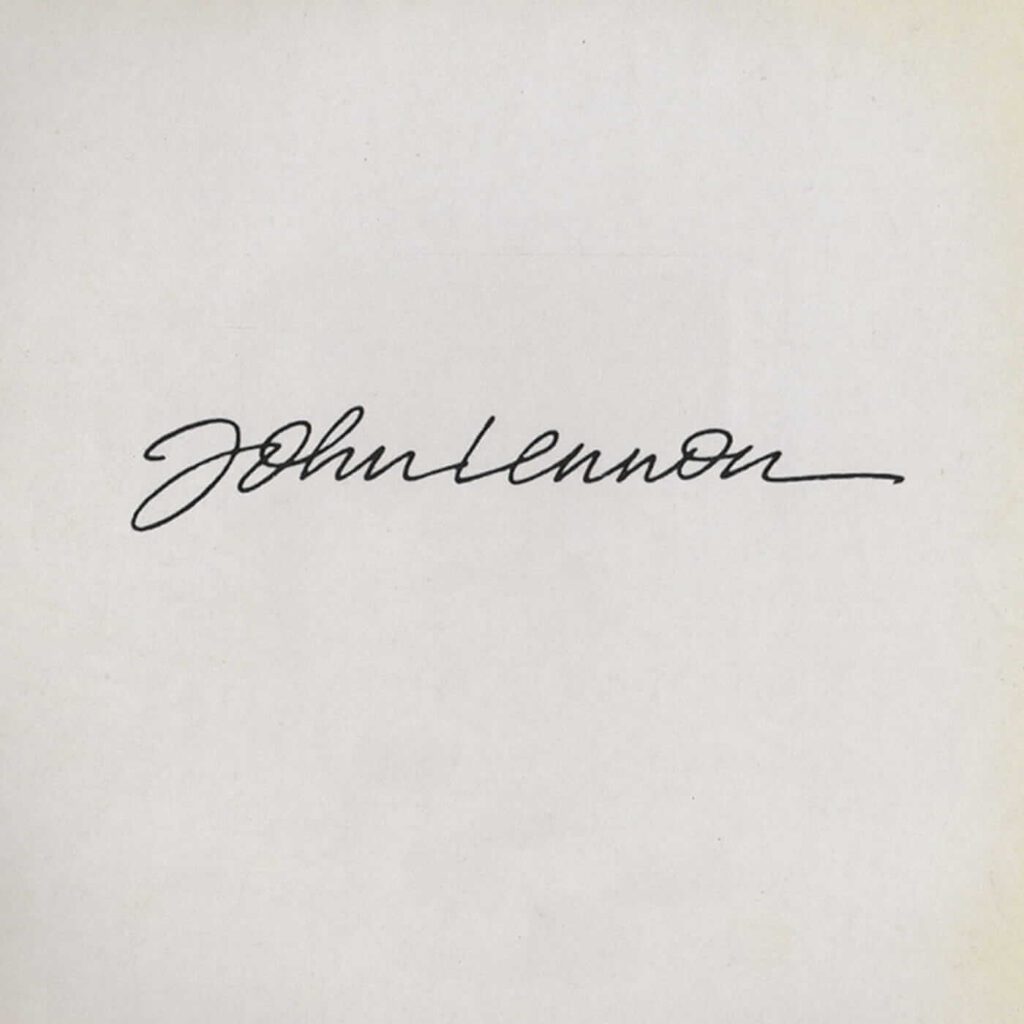
John Lennon’s signature is one of the most sought-after autographs in the world. As a member of The Beatles and an influential solo artist, his legacy lives on through his music, activism, and memorabilia. But with high demand comes a high risk of forgeries. Spotting an authentic John Lennon signature requires knowledge, patience, and a keen eye for detail.
Whether you’re a seasoned collector or just starting out, this guide will help you distinguish a genuine Lennon autograph from a fake.
Understanding Lennon’s Signature Styles
John Lennon’s signature evolved throughout his life. His handwriting changed over the years, influenced by personal habits, artistic phases, and even the speed at which he was signing.
Early Beatles Era (1960-1964)
During the early 1960s, Lennon’s autograph was relatively neat and structured. As The Beatles rose to fame, he often signed in full, with a clear “John” and a looping “Lennon.” Since The Beatles frequently signed fan autographs together, these signatures are often found alongside those of Paul McCartney, George Harrison, and Ringo Starr.
Mid-to-Late Beatles Era (1965-1969)
As Beatlemania reached its peak, Lennon’s signature became more rushed. His “J” in John often turned into a simple vertical stroke, and his “Lennon” became more stylized. Many autographs from this period were signed quickly on albums, promotional materials, and letters.
Solo Years (1970-1980)
Lennon’s post-Beatles signature became more fluid, reflecting his artistic independence. His full name was sometimes abbreviated, and his handwriting showed more personal flair. During his time in New York, he often signed artwork, letters, and books with a relaxed, freehand style.

Key Features of an Authentic Lennon Signature
1. Fluent, Natural Flow
A real John Lennon signature will have smooth, continuous strokes. His writing was confident, and you can often see slight variations that indicate natural hand movement. Forged signatures may appear shaky, overly uniform, or artificially precise.
2. Distinctive Lettering
- The “J” in John usually had a long, bold stroke.
- The “L” in Lennon often had a looping or slanted shape.
- His writing had a natural slant, sometimes leaning slightly to the right.
3. Proper Ink and Writing Surfaces
Lennon primarily signed with fountain pens, ballpoint pens, or felt-tip markers. If an autograph appears to be printed or lacks ink variations, it’s likely a reproduction. Authentic signatures also often appear on relevant memorabilia—Beatles albums, photographs, or handwritten letters.
Common Forgery Red Flags
1. Printed or Stamped Signatures
Many fakes are mass-produced using printed replicas or autopen machines. Look for a natural ink flow, where pressure varies slightly throughout the signature. If every autograph looks identical, be skeptical.
2. Too Perfect or Too Sloppy
Genuine signatures have character but are not overly messy. If the signature is extremely clean and robotic, it may be a forgery. Likewise, if it looks hurried but lacks the confidence of Lennon’s natural flow, it’s likely fake.
3. Wrong Time Period
If a signature style does not match the era of the item it’s on, it’s suspicious. For example, a signature from 1963 should not resemble one from 1975.
Where to Find Authentic Lennon Signatures
1. Reputable Auction Houses
Trusted auction houses like Christie’s, Sotheby’s, and Heritage Auctions regularly handle authentic Lennon memorabilia. These sources provide certificates of authenticity (COAs) from experts.
2. Certified Dealers and Collectors
Look for autograph dealers who are members of organizations like the Universal Autograph Collectors Club (UACC) or the Professional Autograph Dealers Association (PADA).
3. Beatles Memorabilia Experts
There are specialists who focus solely on Beatles autographs. Consulting with these experts can add an extra layer of security when making a purchase.
How to Verify a Lennon Signature Before Buying
1. Compare with Verified Examples
Use trusted sources, books, or archives to compare signatures from different periods.
2. Request a Certificate of Authenticity
Always ask for a COA from a reputable authentication service, such as:
- PSA/DNA (Professional Sports Authenticator)
- JSA (James Spence Authentication)
- Beckett Authentication Services
3. Get a Second Opinion
If in doubt, consult multiple experts before making a purchase.
Protecting Your Collection
If you own a Lennon autograph, store it properly to preserve its value:
- Use UV-protected frames for signed photos and album covers.
- Keep autographs in acid-free sleeves.
- Avoid direct sunlight and extreme temperatures.
Celebrate Lennon’s Legacy
At poprocktee.com, we honor John Lennon’s enduring influence through our collection of Lennon-inspired tee. Whether you’re a lifelong fan or a new collector, our designs celebrate his music, activism, and artistic vision.
Explore our t-shirt collection and find a shirt that connects you to Lennon’s timeless legacy.
John Lennon’s signature is more than ink on paper—it’s a piece of music history. Whether you’re looking to collect or verify an autograph, knowing the details of his handwriting can help you avoid fakes and find the real deal.
By studying Lennon’s signature and using expert resources, you can confidently build a collection that truly honors his legacy.
For more information on Lennon memorabilia, check out these sources:
